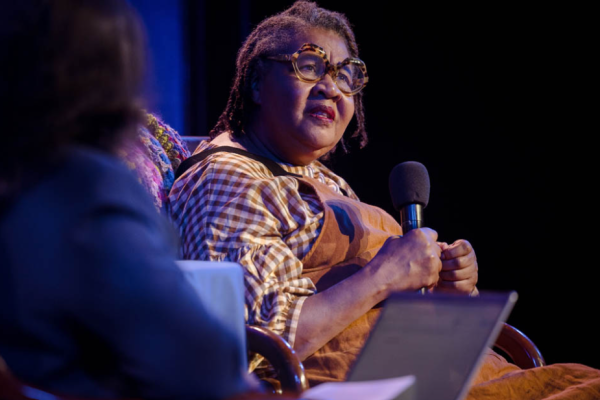Celebrating Inclusivity and Unitedness through History, Language, and Food

Hispanic Heritage Month is celebrated in the United States from Thursday, Sept. 15 to Saturday, Oct. 15. The month recognizes the achievements and contributions of Hispanic Americans with origins from South America, Mexico, Spain, the Caribbean and Central America. It also draws importance to the many issues and challenges faced by the LatinX community in the United States. This year’s theme for Hispanic Heritage month is Unidos: Inclusivity for a Stronger Nation, which encourages all voices to be welcomed and represented to create and build a stronger community.
Hispanic Heritage Month was first initiated in 1968 by President Lyndon B. Johnson; expanded and signed
into law under President Ronald Reagan in 1988. The start of the month was chosen to commemorate the anniversary of the Cry of Dolores, which marked the start of the Mexican War of Independence. In addition, September 15 marks the anniversary of independence for many Latin American Countries such as Nicaragua, Costa Rica, El Salvador, Guatemala and Honduras.
Saint Louis University Spanish Professor Sarah Baeur says, “Hispanic Heritage Month is a way to draw students’ attention to things, people and events that celebrate Hispanic culture.”
In her opinion, every month should be Hispanic heritage month. Baeur highlighted a new book titled, “Solito” (translated to “unaccompanied” in English) by Javier Zamora which details his weeks-long journey from El Salvador to the U.S. to reunite with his parents at nine years old. Zamora’s story brings to light the dangerous and harrowing journeys of migrants at such a young age, while prompting questions about immigration reform and how it affects the lives of many in Southern/Central America.
To Dr. Sheri Anderson-Guitterez, another SLU Spanish professor, as well as linguist, Hispanic Heritage Month means something different to each of her roles as a professor, wife/mother and a person.
As a professor, Anderson underscores the deep cultural and linguistic ties that the United States has with
Spanish, saying “Spanish was spoken in the country before English.”
As the second largest minority in the country, this month allows us to celebrate the roots, history, and culture we have with Spanish-speaking countries in Central/South America and Spain. As a person as well as a mother/wife in a biracial and multicultural household, Anderson- Guiterez says this month allows her to celebrate her husband’s culture and involve her children in his culture as well. She also shared that she had the opportunity to go to her children’s kindergarten and second grade classes to present about Hispanic heritage and Mexican independence day.
In line with the theme for this year, Anderson points out the necessity for representation of people of all backgrounds regardless of their fluency in Spanish. While Hispanic Heritage Month allows people to proudly celebrate their Hispanic roots and culture, others may feel displaced and rejected from their community for not embracing the culture enough. For example, children of Hispanic immigrants who do not speak Spanish/speak fluently are shamed by their community while also struggling to fit in with the American community around them.
Anderson highlights the fact that “The Spanish of the U.S. is different and of its own variety.”
Instead of alienating and shaming those who do not conform to traditional practices and ways of speaking, we should encourage and allow them to explore their own identity. For Bauer, Learning Spanish allowed her to empathize with others and to learn that our way is not the only way of doing things.
“Spanish has opened up a lot of doors and allowed her to see different perspectives coming from a monolingual family,” Bauer says.
Bauer recommends people listen to podcasts such as “Radio Ambulante” and a local podcast “We Live Here (Spanish Edition)” to understand more about Latin American stories and the Spanish language. She also emphasizes the importance of learning another language, especially with the increasing Spanish population in St. Louis. According to the U.S Census Bureau, the Hispanic population makes up 4.1 percent of the total St. Louis population, making it the third largest minority in the city. This statistic is reflected in SLU’s incoming class in which 10 percent of the freshmen identify as Hispanic.
Some St. Louis area events that celebrate Hispanic Heritage Month include the Greater St. Louis Hispanic Festival starting Sept. 23 to 25 from 10 a.m. to 10 p.m. at Soulard Park and the O’Fallon Latin Festival on Sept. 18 from 11 a.m. to 6 p.m. On campus, OASIS, a group promoting Caribbean, Latin American, and Hispanic culture, held a Hispanic Heritage Month kick-off event that hosted trivia games, food, and prizes. They’re also hosting the last summer party of the year (Parrillada – Un Verano Contigo) at SLUruba Sept. 22 from 5 p.m. to 7 p.m.
Lastly, this Hispanic heritage month, one can think about and reflect on the contribution of Hispanic Americans in building in America while also keeping in mind how far we still have to go in creating a welcoming, inclusive society.
Your donation will support the student journalists of Saint Louis University. Your contribution will help us cover our annual website hosting costs.


![The Teskey Brothers [Crew] gather together for a curtain call in front of a raucous St. Louis crowd after a two-song encore. (Photo courtesy of Vertrell Yates / @trellseyephotography)](https://unewsonline.com/wp-content/uploads/2024/05/Screenshot-2024-05-21-232057-600x370.png)








